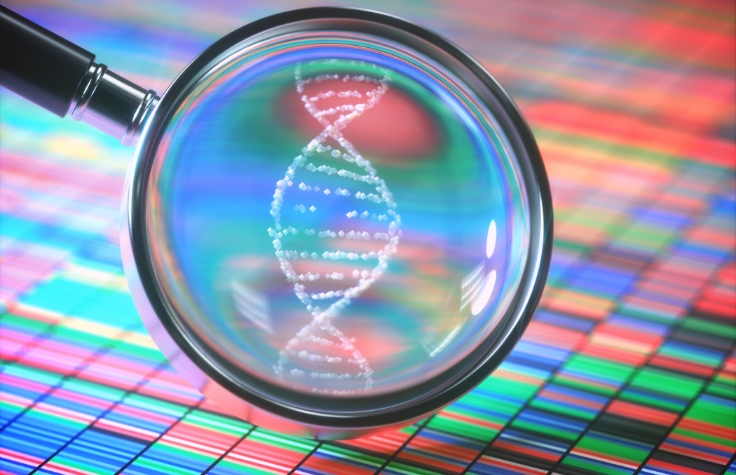Genes and Inherited Diseases
What is a Gene?
Genes are special segments of DNA letters that, when read correctly by the body's proteins, can provide a specific and important instruction for the body to function properly. Researchers estimate that there are about 22,000 genes contained in the genome. Although genes are very important, they make up only a small percentage of all of the DNA in the genome. Each gene has a specific location on one of our 23 chromosomes and is inherited, or passed down, from generation to generation as a unit. We have two copies of each chromosome and, thus, two copies of each gene.
We inherit one copy from each of our parents and, in turn, pass on one of our two copies to each of our children.
Each gene contains a specific set of instructions for the body. Some genes contain multiple sets of instructions. Usually these instructions make a protein. There are many different types of proteins in our bodies which can perform multiple important tasks. For example, proteins form the basis of our organ tissues, bones, and nervous system. They also guide how we digest food and medications.

What is an Inherited Disease?
Although genetic factors play a part in nearly all health conditions and characteristics, there are some conditions in which the genetic changes are almost exclusively responsible for causing the condition. These are called genetic disorders, or inherited diseases.
Since genes are passed from parent to child, any changes to the DNA within a gene are also passed. DNA changes may also happen spontaneously, showing up for the first time within the child of unaffected parents. This is referred to as a new mutation, where the word mutation means change.
Sometimes this change can cause mistakes in the protein instructions, leading to production of a protein that doesn't work properly or cannot be made at all. When one protein is missing or not working as it should, it can cause a genetic disorder.
The genetics of each disorder are unique. In some cases, all the mistakes in a particular gene cause one specific genetic disorder. In other cases, different changes within the same gene can lead to different health or developmental problems or even to different genetic disorders. Sometimes changes in several similar genes may all lead to the same genetic disorder.
When Do Inherited Diseases Appear?
Genetic disorders are typically inherited (passed down) in either a dominant or recessive manner. We each have two copies of every gene on our 22 numbered chromosomes. In addition, females have two copies of all the genes on the X chromosome, whereas males have one copy of the X chromosome genes and one copy of the Y chromosome genes.
When a disorder is dominant, the disease can occur when there are DNA mistakes in only one of the two gene copies. This means that if a parent has the DNA change, there is a 50-50 chance that it will be passed on to each child.
When a disorder is recessive, there must be mistakes in both copies of the gene for the disorder to occur. This means that both parents must carry at least one copy of the specific gene change in order to produce an affected child.
If both parents have one changed copy, there is a 1 in 4, or 25% chance, that a child may inherit both changed copies at the same time, causing the disorder in the child. Parents who have only one changed gene copy usually do not display any symptoms of the disorder and may not even know they carry a gene change. Researchers estimate that we each have ("carry") 6-10 recessive gene changes. Certain recessive gene changes may be more common in different population groups. For example, sickle cell gene changes are found more often in individuals with West African ancestry and cystic fibrosis gene changes are more common in individuals with North European ancestry.
In addition to the inheritance pattern, some genetic disorders may be inconsistent when it comes to whether a person develops symptoms and their severity. Penetrance refers to whether the person who has the causative gene changes actually develops any symptoms of the disorder. Expressivity refers to the symptoms that may develop and their severity.
Interested in receiving newsletters, case studies, and information on new applications? Enter your email address.
Featured Stories
Unlocking the Potential of the Genome

A survey found that many Americans are unaware of DNA's power to improve lives.
Read ArticleA Snapshot Into the Past

The mysteries hidden within ancient DNA may harness the answers to today’s mental health epidemic.
Read Article